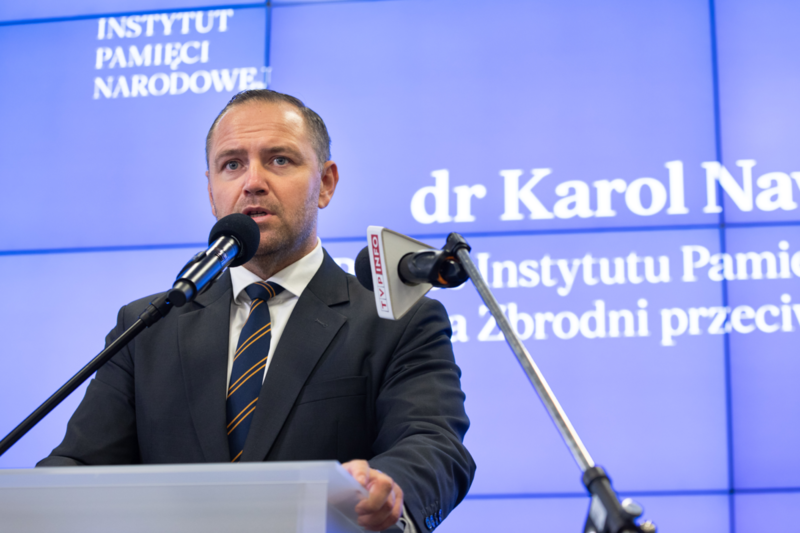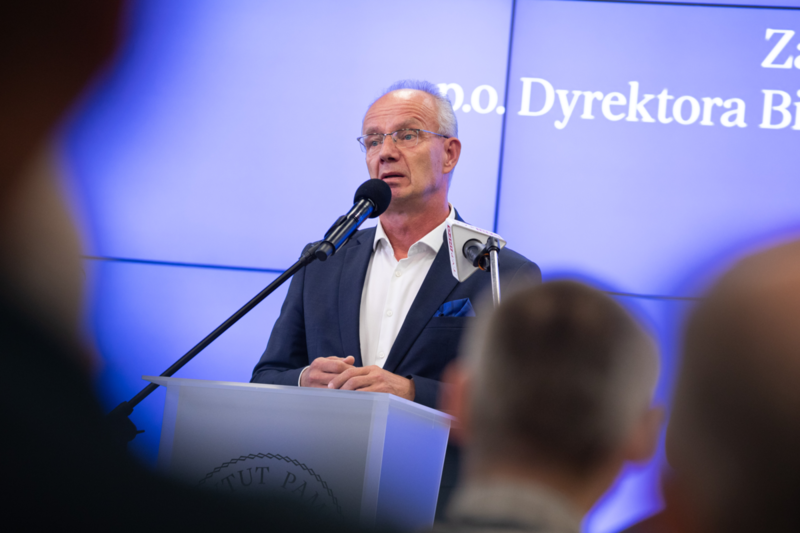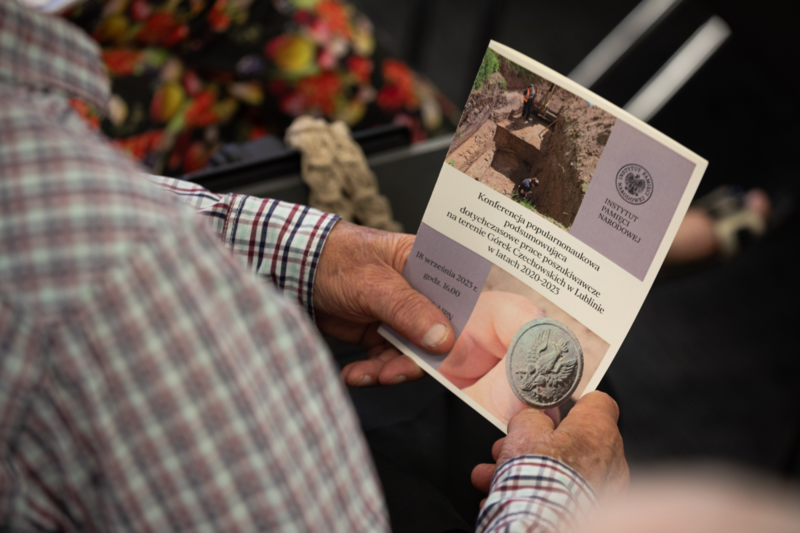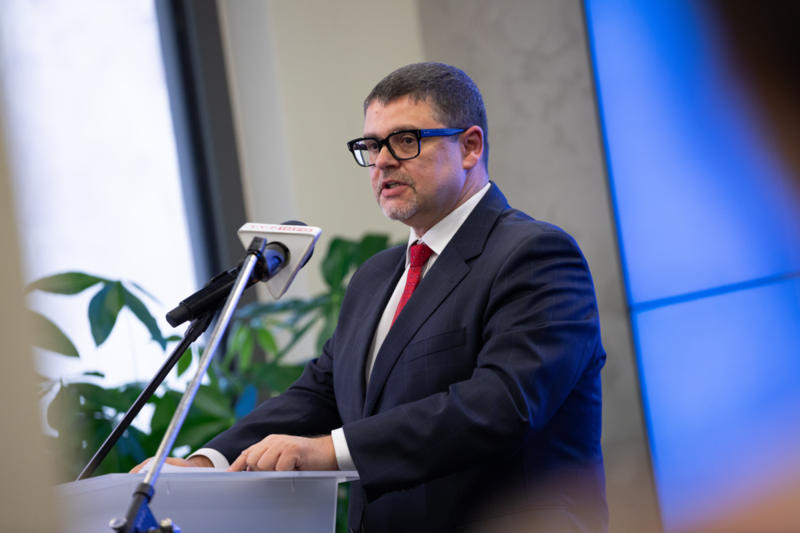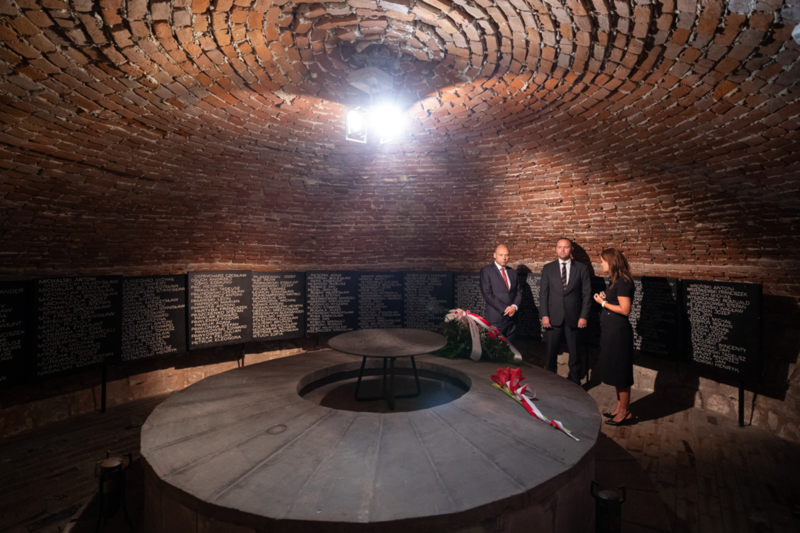These were the first such large-scale archaeological and exhumation works conducted after 1945. They consisted of five stages and were carried out in 2020-2023 by the IPN Office of Search and Identification. Prior to that, they had also been carried out as part of prosecutorial proceedings conducted by the Branch Commission for the Prosecution of Crimes against the Polish Nation in Lublin.
While no remains were discovered during the first two stages, the remains of more than 40 people were found in subsequent stages. The items found with them indicate that the victims included soldiers of the Polish Army or people affiliated with the Polish state, as indicated by elements of their clothing with emblems referring to our homeland.
The Czechów Hills became a site of no fewer than six mass shootings of Poles and Jews between March 1940 and June 1942. Some of the victims were killed in German Sonderaktion Lublin, an attack on Polish intelligentsia, others were political prisoners from the Lublin Castle.
One of the least recognized execution sites in the Lublin area are the so-called Czechów Hills. During World War II, the Germans carried out mass executions of inmates of the Lublin Castle prison there. Between 2020 and 2023, the IPN's Office of Search and Identification conducted five phases of work to locate the undisclosed graves.
The World War II period represents the most tragic chapter in the 700-year history of Lublin. As a result of the German occupier's extermination policies, some 50,000 residents, including almost the entire Jewish community, perished. The prison in the local castle was, along with Warsaw's Pawiak, Cracow's Montelupich and Poznan's forts, among the largest and cruelest casemates in occupied Poland.
In 1940-1942, in the northern part of Lublin, in the so-called Czechowskie Hills, functionaries of the German occupation apparatus carried out at least six mass executions. The total number of their victims is unknown.
In the period from 9 December 1947 to 5 January 1948, several exhumations were carried out on the grounds of the Municipal Greenery and in the surrounding ravines, during which 231 remains were discovered. The exhumations carried out in the 1940s did not provide an answer to the question of whether all of the Czechów Hillside execution sites had been identified.
Most of the 231 bodies found there in the course of the 1947 and 1948 exhumations have not been identified.
Those remains which are still to be unearthed deserve a proper burial, and in the last three years, the IPN Office of Search and Identification has been looking for them, so far finding the remains of over 40 people. Today’s conference, featuring the IPN President Karol Nawrocki, Deputy President Krzysztof Szwagrzyk and Deputy Prosecutor General Andrzej Pozorski, summed up that work.
Opening the conference, the IPN Head Karol Nawrocki said,
"I came here to assure you that the IPN never leaves behind all those Poles killed by two totalitarian regimes, and speaks for the people who can’t speak for themselves because they have lost their lives . . . For us, historical truth, determined by our historians, prosecutors, archaeologists and other Office of Search and Identification experts is of key importance."
Referring to the 40 located victims, Deputy President and Head of the Office of Search and Identification Krzysztof Szwagrzyk explained,
"We can confirm that they are execution victims, and we found them the way they had been buried all those years ago. We can confirm they were executed Polish citizens. We can confirm they had been wearing clothes when they died, because we found the remains of these garments. We can determine how exactly they were shot, and we can identify some of them as members of Polish military by the buttons found with the bodies."
The IPN is to continue its exhumation and identification works in the Czechów Hills.
